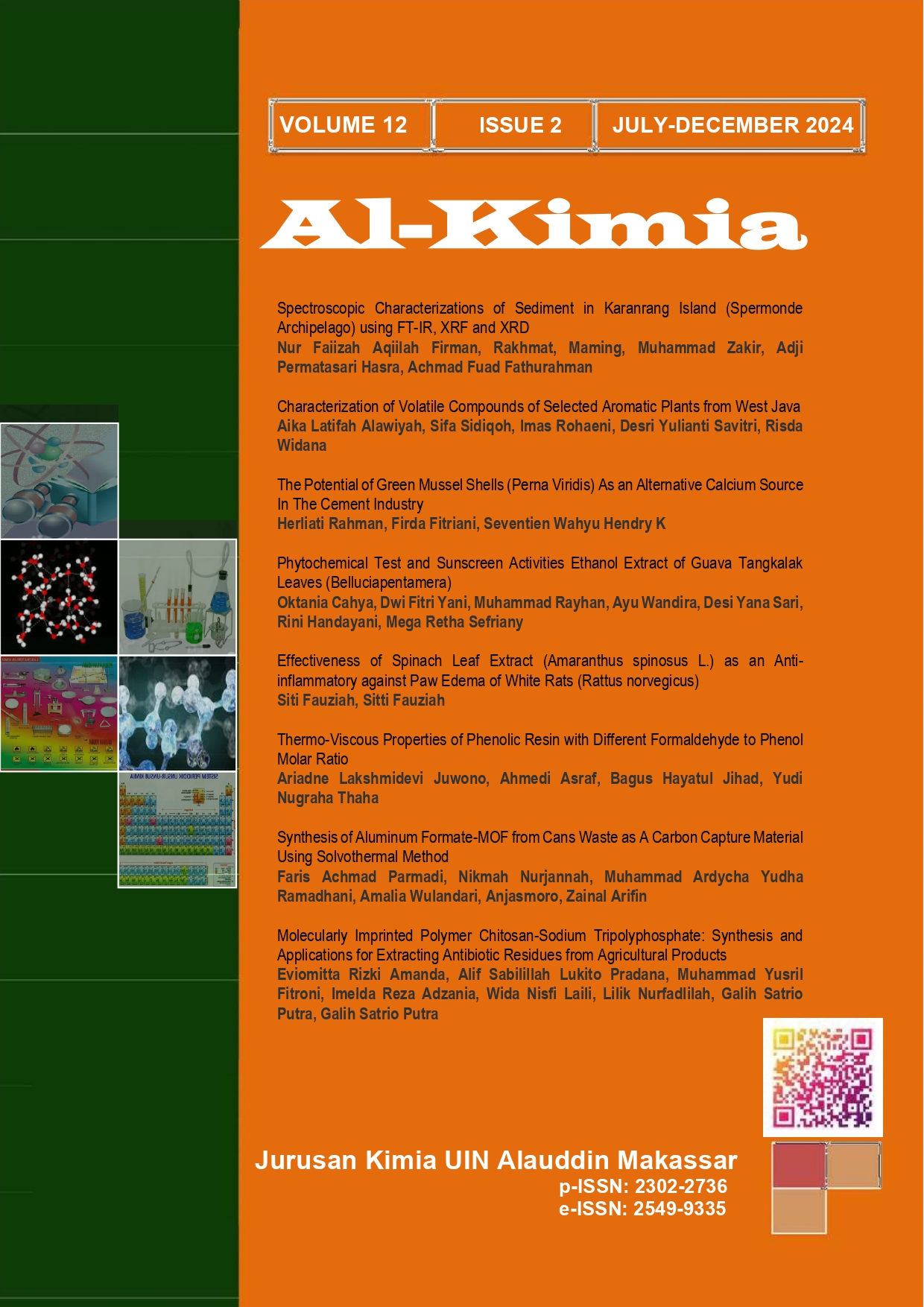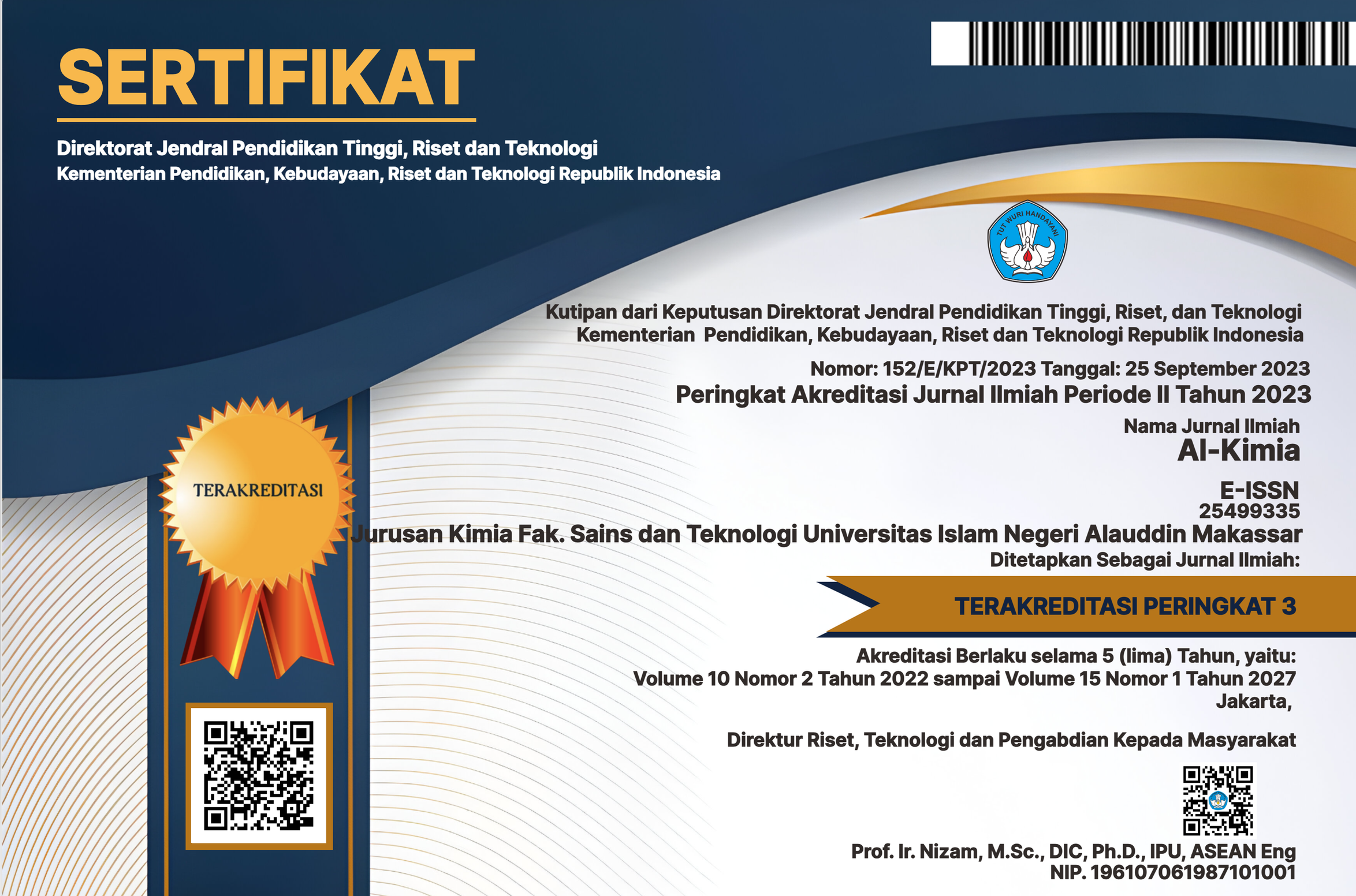Thermo-Viscous Properties of Phenolic Resin With Different Formaldehyde To Phenol Molar Ratio
DOI:
https://doi.org/10.24252/al-kimia.v12i2.50494Keywords:
Phenolic resin, phenol, formaldehyde, viscosity, arrhenius equationAbstract
Phenolic resin is widely used as a matrix in the composite material. Understanding the thermo-viscous properties of the resin is essential because the viscosity is one of the main factors determining the success of the composite material fabrication. In this study, we synthesized the resin with formaldehyde to phenol molar ratio (F/P) of 1.1, 1.2, 1.3, and 1.4 and analyzed their viscosity as a function of temperature from 17℃ to 25℃. It was observed that the plot of the natural logarithm of the viscosity versus the reciprocal of the temperature of the synthesized phenolic resin is linear. Based on the slope of the Arrhenius plot, the Arrhenius energy of activation varies as a function of the F/P value. The resin’s Arrhenius energy of activation with an F/P value of 1.1, 1.2, 1.3, and 1.4 was 88.8 kJ⁄mol, 96.5 kJ⁄mol, 86.1 kJ⁄mol, and 81.4 kJ⁄mol, respectively. Furthermore, the differential scanning calorimetry (DSC) analysis was conducted on all resins. The endothermic reaction due to water evaporation was found to be dominated at a temperature of around 100℃, and the curing reaction peak of all resins took place at 150℃.
Downloads
References
Albert, M., Coto García, B., Kuhnert, C., Peschla, R., & Maurer, G. (2000). Vapor–liquid equilibrium of aqueous solutions of formaldehyde and methanol. AIChE Journal, 46(8), 1676–1687.
Alzamil, N. O. (2021). Estimation of the boiling point and prediction of the VLE in methyl benzoate + N-octane binary liquid systems via viscosity-temperature dependence at atmospheric pressure. Materials Research Express, 8(7), 076301.
Downloads
Published
Versions
- 2025-06-25 (2)
- 2024-12-24 (1)
How to Cite
Issue
Section
License
Authors who publish with this journal agree to the following terms:
1) Authors retain copyright and grant the journal right of first publication with the work simultaneously licensed under a Creative Commons Attribution License that allows others to share the work with an acknowledgement of the work's authorship and initial publication in this journal.
2) Authors are able to enter into separate, additional contractual arrangements for the non-exclusive distribution of the journal's published version of the work (e.g., post it to an institutional repository or publish it in a book), with an acknowledgement of its initial publication in this journal.
3)Authors are permitted and encouraged to post their work online (e.g., in institutional repositories or on their website) prior to and during the submission process, as it can lead to productive exchanges, as well as earlier and greater citation of published work (See The Effect of Open Access).



